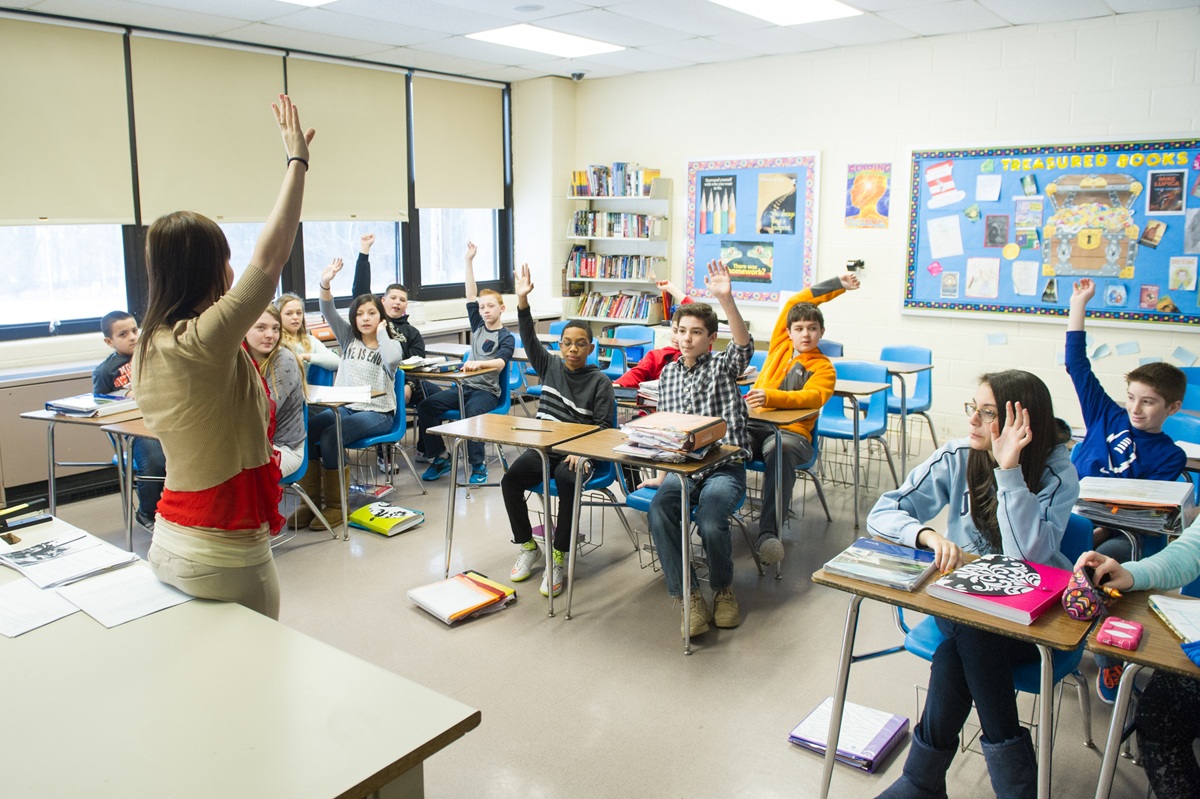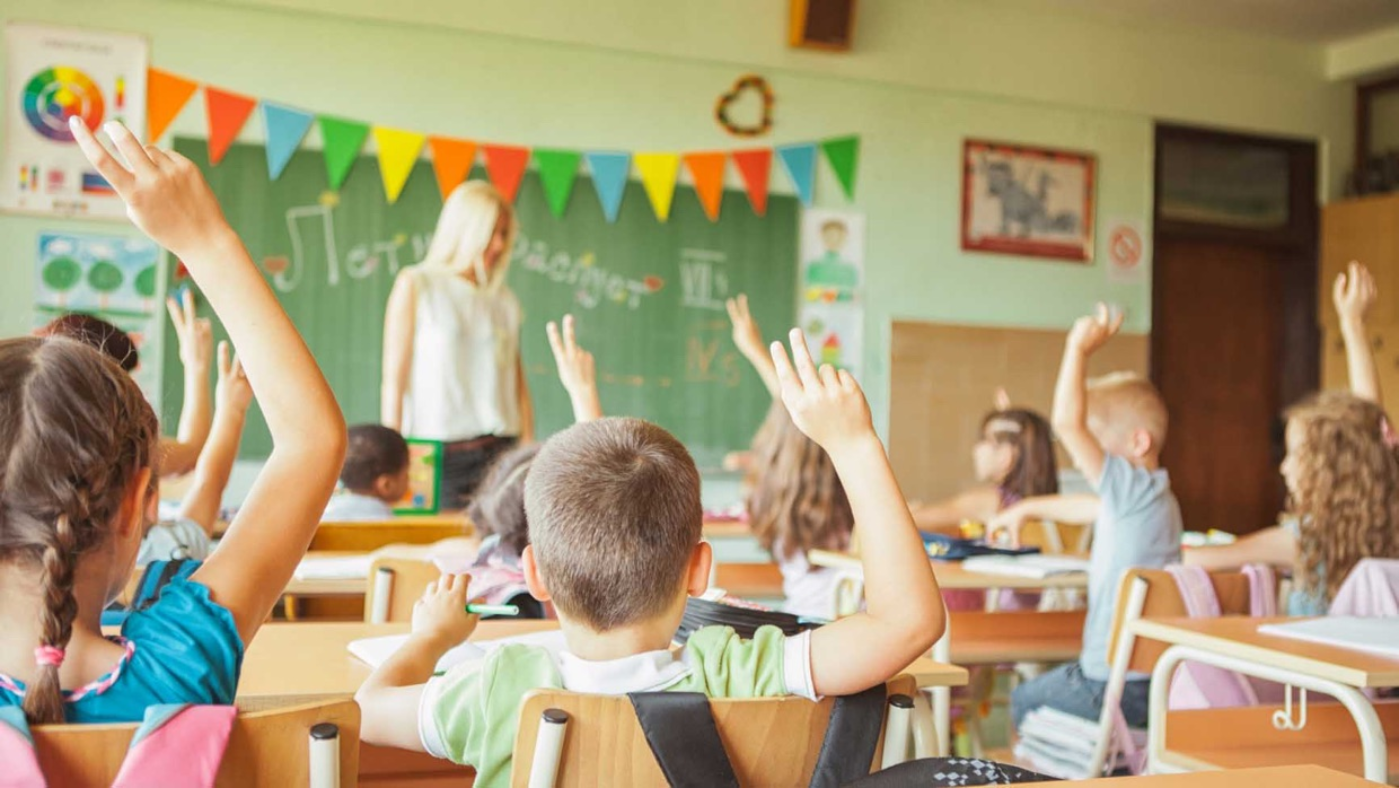Find the Best Primary Science Tuition Singapore for Enhanced Learning
Find the Best Primary Science Tuition Singapore for Enhanced Learning
Blog Article
A Comprehensive Overview to the Different Understanding Approaches in Main Science Guideline
The exploration of diverse understanding methods in key scientific research guideline offers an opportunity for educators to enhance trainee engagement and understanding dramatically. By analyzing hands-on understanding strategies, inquiry-based methods, and collaborative strategies, we can recognize reliable methods that accommodate various learning styles. Furthermore, the assimilation of modern technology and separated instruction plays a crucial duty in cultivating an inclusive setting. The concern remains: how can these approaches be effectively implemented in the class to optimize their influence? The response depends on a closer evaluation of each strategy and its ramifications for training science.

Hands-On Understanding Techniques
Hands-on knowing methods play a crucial function in key science instruction, involving trainees in active expedition and experimentation. These approaches enable learners to engage directly with phenomena and materials, fostering a deeper understanding of scientific ideas. By utilizing manipulatives, models, and real-life experiments, educators produce a setting where pupils can observe, assume, and examine their concepts.
Such strategies not only boost comprehension but additionally cultivate critical reasoning and analytic skills. When students get involved in tasks like building basic makers, planting seeds, or performing chemical reactions, they are motivated to ask concerns and look for responses via their own monitorings. This experiential technique aids to debunk complex scientific concepts, making them extra relatable and easily accessible.
Furthermore, hands-on understanding advertises cooperation amongst peers, as students usually operate in groups to conduct experiments or share findings. This synergy not just improves their discovering experience but also establishes essential social abilities. Ultimately, incorporating hands-on strategies in primary scientific research direction cultivates a long-lasting love of discovering and inquisitiveness concerning the natural globe, laying a strong structure for future academic quests in scientific research and past.
Inquiry-Based Learning
Inquiry-based understanding is a training approach that encourages trainees to ask inquiries, investigate phenomena, and construct their own understanding of clinical concepts. This method changes the focus from traditional teacher-led guideline to a more student-centered experience, where students take the campaign in their academic trip. By fostering curiosity, inquiry-based learning advertises deeper involvement with the material, permitting trainees to discover topics in a purposeful context.
In practice, this approach usually includes hands-on experiments, observations, and critical thinking activities that line up very closely with the clinical approach. Trainees are encouraged to create theories, style investigations, and assess information, which cultivates necessary skills such as analytic and logical thinking. The duty of the teacher in this framework is to assist in expedition, leading pupils via the inquiry procedure while urging independent thought and collaboration.
Moreover, inquiry-based learning nurtures a sense of ownership over the understanding process, motivating students to seek understanding actively. This method not just enhances understanding of scientific principles however also fosters a lifelong love for knowing, equipping pupils with the skills necessary to browse an increasingly intricate world.
Collaborative Understanding Approaches
Collective knowing strategies empower trainees to participate in meaningful interactions with peers, cultivating a common duty for their educational outcomes. In main scientific research direction, these techniques encourage learners to interact to explore scientific ideas, fix issues, and conduct experiments (primary science tuition Singapore). By participating in group activities, pupils can utilize varied perspectives, enabling for richer understanding and retention of clinical knowledge
One secret aspect of joint understanding is the focus on interaction skills. Trainees should verbalize their thoughts, listen actively to others, and bargain concepts, every one of which are vital competencies in both academic and real-world contexts. This social communication not only enhances their understanding of scientific principles however likewise promotes teamwork and problem resolution skills.
When students see the worth of their payments within a team, they are extra most likely to take ownership of their understanding journey. On the whole, incorporating collective knowing techniques in key science instruction cultivates a vibrant discovering setting that prepares students for future academic and social challenges.
Technology Combination in Scientific Research
The integration of technology in main science direction boosts finding out experiences by offering ingenious tools and resources that sustain various teaching methodologies, consisting of collective discovering - primary science tuition Singapore. Using digital systems, Source simulations, and interactive applications enables trainees to engage deeply with scientific ideas, helping with an extra hands-on technique to learning
Digital research laboratories, as an example, make it possible for students to conduct experiments safely and efficiently, promoting inquiry-based knowing. These devices can mimic real-world clinical scenarios, permitting pupils to picture intricate processes that would be hard to replicate in a conventional class setup. Innovation promotes interaction and partnership amongst pupils, as they can share findings and work with each other on tasks with on the internet systems.
Furthermore, multimedia discussions and educational video clips can improve lessons by dealing with diverse discovering styles, making abstract principles much more available. Information evaluation devices additionally empower pupils to gather and translate scientific data, enhancing crucial believing skills. Generally, the critical incorporation of modern technology in key science guideline not just improves interaction however likewise prepares pupils for a highly advanced society, outfitting them with vital abilities for future clinical endeavors.
Separated Direction Methods
Distinguished direction techniques are crucial for attending to the diverse needs of students in primary science education. These strategies make it possible for educators to tailor their training approaches to fit differing capacities, interests, and finding out designs within the class. By using set apart guideline, instructors can create a comprehensive environment that promotes engagement and boosts understanding of scientific concepts.
One effective method is to utilize versatile grouping, which enables trainees to collaborate with peers at comparable skill degrees or with differing perspectives. This technique urges peer learning and advertises essential reasoning. Additionally, using options in tasks can encourage students, permitting them to select tasks that reverberate with their passions while still meeting curricular objectives.
In addition, integrating tiered tasks is one more important strategy. By designing jobs with differing levels of complexity, instructors can make certain that all students are suitably challenged, no matter their proficiency. Utilizing formative assessments to determine recognizing further makes it possible for teachers to change their educational approaches dynamically, ensuring that each learner obtains the support they require.
Inevitably, applying separated direction techniques in main science education and learning not only boosts trainee learning outcomes but also cultivates an interest for science, preparing trainees for future academic pursuits.

Conclusion
In summary, effective primary science guideline requires a complex method that incorporates hands-on click this discovering, inquiry-based methods, and joint strategies. The combination of modern technology and set apart instruction better caters to varied knowing designs, fostering an atmosphere helpful to exploration and essential reasoning.
The exploration of varied learning methods in primary scientific research guideline presents a chance for teachers to boost trainee involvement and comprehension substantially.Hands-on knowing techniques play an essential role in primary science instruction, engaging trainees in energetic expedition and trial and error.Inquiry-based understanding is an educational method that urges students to ask inquiries, explore phenomena, and construct their own understanding of scientific ideas.Joint learning strategies empower trainees to engage in purposeful interactions with peers, important source cultivating a common obligation for their instructional end results. On the whole, integrating collective knowing methods in primary science direction cultivates a vibrant discovering environment that prepares pupils for future scholastic and social challenges.
Report this page